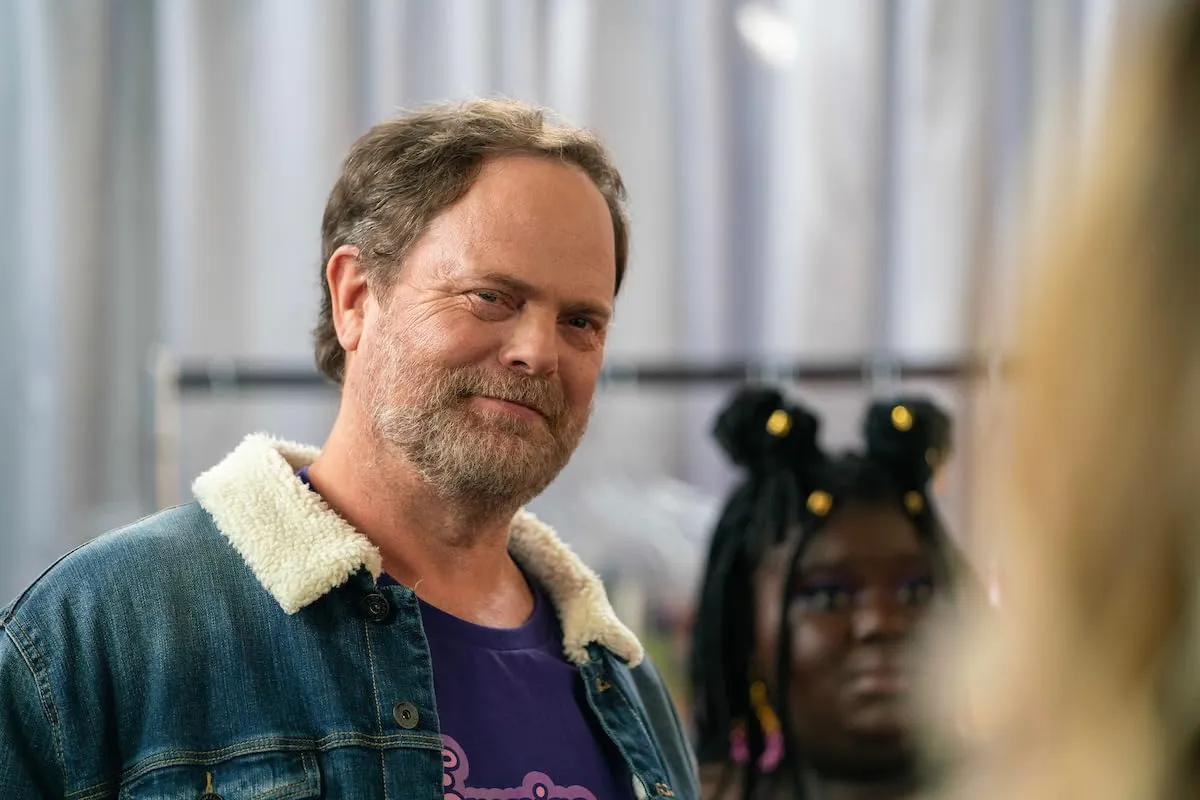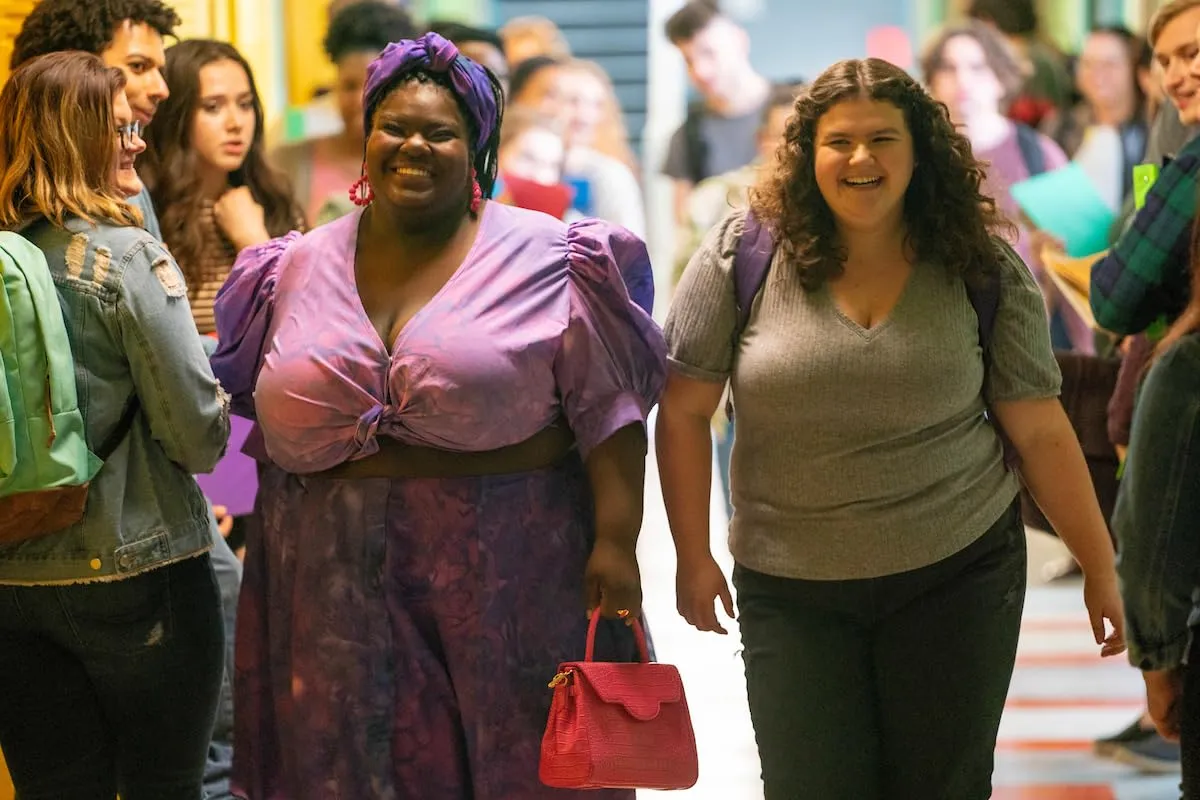In “Empire Waist,” we meet Lenore, a plus-sized youngster who has mastered invisibility, cloaked in black to avoid her friends’ piercing gazes. Her life is a difficult balance between avoiding criticism and developing a secret aptitude for fashion design, encouraged by her supportive father, Mark, but suppressed by her fitness-obsessed mother.
Then there’s Kayla, a force of self-acceptance whose exuberant confidence starkly contrasts Lenore’s self-doubt. Their collaboration on a school project sparks Lenore’s transformation, pulling her out of the shadows and into a new sense of purpose. This collaboration sparks a journey toward personal progress and accepting the dynamic community of misfits that emerges around them.
As they prepare for a fashion competition, the threat of bullying remains large, personified by Sylvie, the spiteful girl whose jabs serve as a bitter reminder of adolescent brutality. As Lenore navigates the complexities of self-worth and friendship, this narrative thread compels us to reflect on our biases about body image and acceptance, making Lenore’s journey genuinely resonate.
Threads of Transformation: Lenore’s Journey
At the beginning of Empire Waist, Lenore is the quintessential misfit, cloaked in self-doubt and the oppressive weight of societal expectations. She epitomizes the struggles that many of us encounter during our turbulent adolescence—a life covered in black, both literally and metaphorically.
Her transformation is more than just acquiring confidence; it’s a reclaiming of her identity, a journey from the shadows to the vivid colors of her imagination. Watching her grow from a girl who doodles alone to a burgeoning fashion designer reflects my own experiences with self-acceptance and reminds me how art can serve as both armor and freedom.
Enter Kayla, a character who enters Lenore’s life like a comet, illuminating the darkest parts of her insecurities. Kayla’s confidence is contagious, prompting Lenore to confront her concerns. Their connection is masterfully nuanced; while Lenore learns to embrace her gifts, Kayla has her struggles hidden beneath her confident front.
We see the strength of unconditional support in their friendship, which is a theme that I truly resonate with. I’ve often wondered how much of my development was fueled by the support of people who saw potential in me even when I didn’t see it myself.
The supporting characters provide depth to the narrative tapestry. Lenore’s parents demonstrate the complexities of love and expectation. Her mother’s well-meaning but unhealthy preoccupation with fitness is a chilling reminder of intergenerational pressures. In contrast, her father’s silent support demonstrates what acceptance might look like.
Then there’s Sylvie, the school bully, whose character represents the all-too-common harshness of adolescence. While her character falls into familiar stereotypes, she starkly contrasts the blossoming alliances that strengthen Lenore. I frequently find myself wondering if these images, while clichéd, might also serve as a mirror to our own biases and the societal myths we propagate.
“Empire Waist” challenges us to reflect on the transformational power of friendship, the weight of expectations, and the courage required to come into the light in this complicated dance of character development.
Embracing Imperfection: The Heart of “Empire Waist”
At its foundation, “Empire Waist” is a vivid celebration of body positivity, a theme that resonates strongly in a culture frequently concerned with excessive expectations. The film bravely confronts fat shaming, constructing a narrative that acknowledges the pain of societal judgment while simultaneously advocating for self-acceptance.
Watching Lenore grapple with her self-image brings up memories of my own struggles with body perception—moments when I felt like an outsider, judged not only by others but also by my harshest critic: myself. The film’s unashamed embrace of the word “fat” as a neutral descriptor is both invigorating and inspiring, encouraging viewers to reconsider the vocabulary we use and the weight it holds.
Beyond individual acceptance, the film expertly depicts the transformational power of friendship. Amid self-doubt, Kayla’s steadfast support for Lenore serves as a lighthouse. Their closeness reminds me of friendships in my own life that have served as lifelines, pulling me from the depths of uncertainty and into the light of self-love. According to the film, true empowerment often comes not in solitude but via connections that pull us up, making us feel recognized and cherished in a world that frequently attempts to make us invisible.
Nonetheless, “Empire Waist” confronts the complexities of intergenerational conflicts. While Lenore and her mother are in love, their relationship is tense. Her mother’s obsession with fitness and looks reveals a generational anxiety cycle, a theme that resonates with many of us who have felt the weight of family expectations.
Watching this relationship play out is both heartbreaking and relatable. It raises issues about how we internalize the insecurities of those who came before us and how they shape our identities. In examining these ideas, the film asks us to think about our travels and the larger societal myths that shape our self-worth.
As I reflect on these layers, I confront my biases and the harsh truths about beauty standards that remain in our culture. “Empire Waist” navigates these treacherous seas with grace and authenticity, reminding us that our worth is defined by the love and connections we cultivate along the road rather than our appearance.
Humour and Heart: The Soul of “Empire Waist”
“Empire Waist” expertly balances humour and heart, creating an entertaining and profoundly moving narrative. The film uses humorous elements to disarm its audience, allowing important themes—such as body image and self-acceptance—to develop with a lightness that feels natural rather than forced.
This combination reminds me of moments in my own life when laughter became a lifeline among turbulent emotional currents. The humor in the talks, frequently delivered with biting wit, reminds me that even in our darkest moments, joy may shine through the gloom, illuminating the path to understanding.
The characters’ relationships have an honest and relatable chemistry. The conversation between Lenore and Kayla is full of energy and shows true friendship, inviting the audience to share in their triumphs and struggles.
Their talks have a tenderness that resonates with anybody who has sought refuge in a partner during difficult times. However, I sometimes find myself on a quest to determine whether the humour undermines the gravity of the topics at hand. Does it dilute the message or serve as a vital counterbalance? This uncertainty stays in my mind, reminding me of my own experiences with trying to find humour in the face of serious matters.
Culturally, the film is strikingly relevant. It addresses current topics, such as weight shaming and mental health, with a skill that feels urgent and vital. The narrative resonates with contemporary teenagers who grapple with comparable issues in a culture riddled with inconsistencies about beauty and worth. As I reflect on these themes, I see my own biases in viewing these struggles through a lens created by my experiences. “Empire Waist” forces us to confront these societal constraints while inviting us to embrace our flaws with humour and grace.
Visual Poetics: The Aesthetics of “Empire Waist”
The visual aesthetics of “Empire Waist” are a rich tapestry representing the characters’ emotional terrain. The film has a rich colour palette that moves from muted tones, which represent Lenore’s initial self-imposed invisibility, to vivid hues, which mirror her growing confidence.
This transformation is more than simply a visual clue; it resonates emotionally with anyone who has felt confined by their surroundings but longs to embrace their true self. Colour serves as a metaphor for self-acceptance, inviting viewers into Lenore’s journey with an almost tactile warmth.
Claire Ayoub’s direction is competent and sophisticated, driving the narrative with a good eye for detail. Her choices, ranging from framing intimate discussions to conveying the tumultuous energy of high school life, reflect a thorough understanding of the adolescent experience.
I frequently wonder if her directorial technique reflects her journey or acknowledges the many voices shaping our understanding of identity. Her storytelling has an authenticity that defies conventional narratives while inviting self-reflection.
However, I grapple with the question: Does the film’s style sometimes overpower its content? It’s a fine mix that elevates Empire Waist from a personal growth tale to a visually fascinating discussion of what it means to find one’s place in an often hostile world.
A Mirror for the Next Generation: Targeting the “Empire Waist”
“Empire Waist” is written with an unmistakable emphasis on a young audience, particularly those navigating the often hazardous seas of high school relationships. The film talks directly to those feeling the weight of societal expectations, particularly regarding body image.
It encourages people to embrace their uniqueness in a world that often rejects difference and resonates with anybody who has ever felt excluded. I reflect on mylescent years, when I, too, craved a narrative that acknowledged my struggles and embraced my quirks.
The film’s relevance to contemporary teen difficulties is significant. In an age dominated by social media’s false depictions of beauty, “Empire Waist” provides a welcome counter-narrative emphasising self-acceptance and the value of supporting friendships. It encourages viewers to think critically about their self-worth, generating important discussions in today’s society.
However, I can’t help but wonder if the film reaches beyond its intended market. Will it resonate with adults who still grapple with body image issues? This ambiguity persists, emphasizing the film’s potential as a cultural touchstone for people of all ages, even though it primarily intends to inspire the younger generation.
The Lasting Echo: The Impact of “Empire Waist”
Long after the credits roll, “Empire Waist” resonates emotionally. The film expertly depicts the turbulent journey of adolescence, weaving moments of joy and pain into a tapestry that seems painfully familiar.
Reflecting on my childhood experiences, I see parallels between Lenore’s struggles—those cringe-worthy moments of self-doubt and the great satisfaction of discovering acceptance. The film’s ability to communicate these thoughts authentically demonstrates its emotional depth, establishing a bond many viewers find difficult to break.
Culturally, “Empire Waist” makes an important addition to the continuing discussion regarding body image and acceptance. In an era of intense societal pressures, it calls into question the conventional narratives that determine how we should perceive ourselves and others.
However, I sometimes wonder if its impact will be sufficient to spur bigger talks in areas that require them the most. The film asks us to reflect on our personal experiences and confront the biases that shape our perceptions of beauty and worth.
The Review
Empire Waist
"Empire Waist" is a touching and powerful exploration of self-acceptance and friendship that will speak to anybody who has ever suffered with their body image. Its lively characters and realistic writing create a novel narrative that questions societal norms while promoting community. The direction of Claire Ayoub strikes a mix between humour and seriousness, making it relatable for a current audience. While it occasionally employs obvious clichés, its emotional depth and cultural relevance have a long-lasting impact.
PROS
- Tackles body positivity and self-acceptance effectively.
- Engaging arcs for Lenore and Kayla.
- Balances serious themes with lighthearted moments.
- Reflects contemporary issues faced by teens.
- Features a range of characters that resonate with various audiences.
CONS
- Relies on some familiar clichés in teen narratives.
- Sylvie’s character lacks depth and complexity.
- Struggles to define its audience clearly.





















































